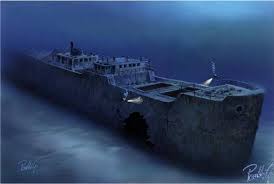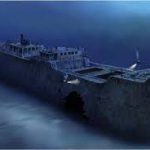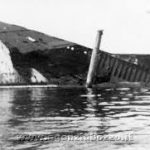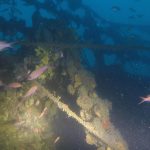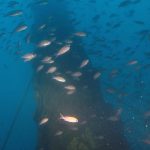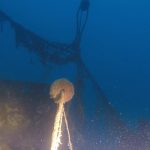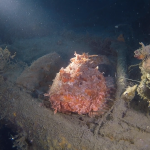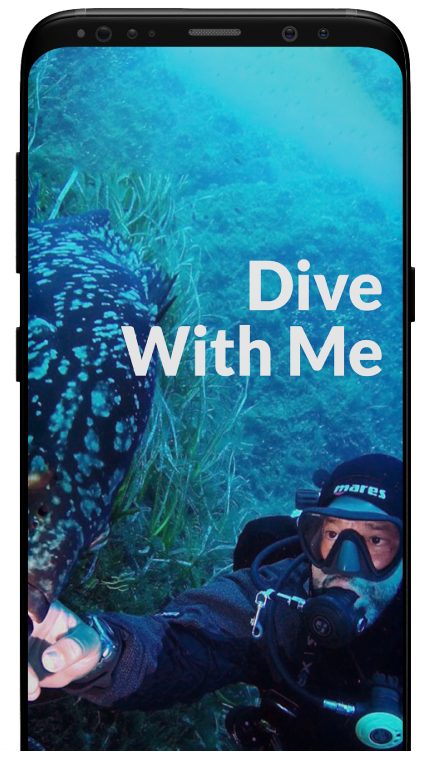07/27/1917 – 07/27/2017: the centenary dive.
The story of the dive on the steamship Genova on the day of the hundredth anniversary of its sinking. A dive that cannot be missed in the logbook of a technical diver.
Probably July 27 a hundred years ago was a wonderful sunny day like today, the First World War was in full swing and several ships, all over the Mediterranean, had already sunk due to enemy attacks.
The Genova was a steamship of almost four thousand gross tons that had been built in 1904 and was owned by the Ilva of Rome.
On July 27, 1917, the ship left La Spezia with a precious load of cannons and other war material. Unfortunately, it did not have an adequate escort to protect it from possible attacks by enemy submarines. A German U-boat intercepted it and torpedoed it on the right side, at the height of the first bow hold.
The large steamer did not immediately sink. It managed to reach the bay of Paraggi where it was able to disembark all the crew unscathed and then agonize for several hours before sinking in the bow, settling in perfect sailing position off the bay, on a muddy seabed of sixty meters.
The steamship is more than a hundred meters long by a width of about fifteen.
Today is July 27, 2017 and exactly one hundred years have passed.
The alarm in my room in Turin went off at 5:00 am. I was not able to rest properly due to the heat and adrenaline. The sky was still dark when I got into the car towards the sea. I was going over there to celebrate this steel giant with dignity.
The centenary dive was organized by Style Diving di San Michele di Pagana, splendido borgo marinaro tra Rapallo e Santa Margherita Ligure.
It was a splendid day, a warm sun was shining on the cobalt blue waters of the Gulf of Tigullio. The sea was calm, there was only a slight current on the surface. The conditions seemed perfect for going to pay homage to the steamship Genova.
Besides me, there were five other divers on the boat. A group of three would ride the closed circuit using rEVO, the new revolutionary rebreather manufactured by Mares. My group would go down instead with the open circuit with bi cylinder 12 + 12 loaded with Trimix 21/35 and with two decompression cylinders, respectively charged with EAN 50 and pure oxygen.
As we went deeper I realized that the visibility was not the best. Unfortunately we were in a fairly wide sea area, often dominated by strong currents, with a muddy bottom. Being in front of the submerged steamer in optimal conditions is a very rare event.
That day, the visibility underwater was however sufficient to show us the bridge in almost all its width and to give us a perspective of the wreck as we proceeded, from stern to bow.
Underwater, the environment was particularly exciting, the rays of the hot summer sun timidly radiated the deep waters of the bay of Paraggi and around me the skeletal structure appeared mammoth and enveloping. Peaks and fishing nets, which the “Genoa” wanted to snatch from the fishermen who decided to plunder its little kingdom of the sea, gave it a slightly gloomy aspect.
In these hundred years, the sea has truly conquered everything. Every square centimeter of steel is completely covered with algae and spongy reed formations whose yellow gives the environment a comforting light. Instead, the madrepores colonize them while on the hydrozoans the lilac flabellines dance to the rhythm of the current happily waving their red appendages.
The wreck also acts as an artificial underwater shoal in the middle of a completely sandy bay. Scorpion fish, moray eels, conger eels and bream have chosen to live in this place.
This iron monument, buried in the abyss, abandoned for many years in the colonizing waters of the Tigullio, preserves a small piece of history and preserves it by being admired only rarely and only when it decides.
The sea, for its part, welcomed it, protected and covered it, transforming it into a living creature, offering it a second life.
👌


